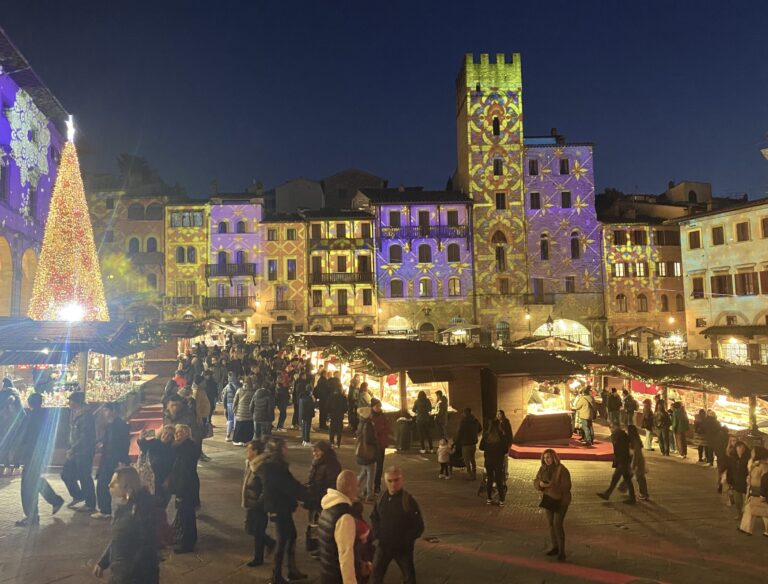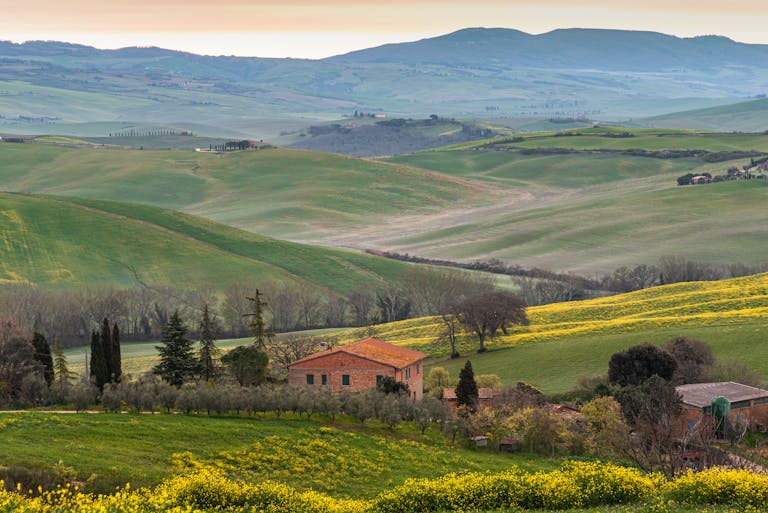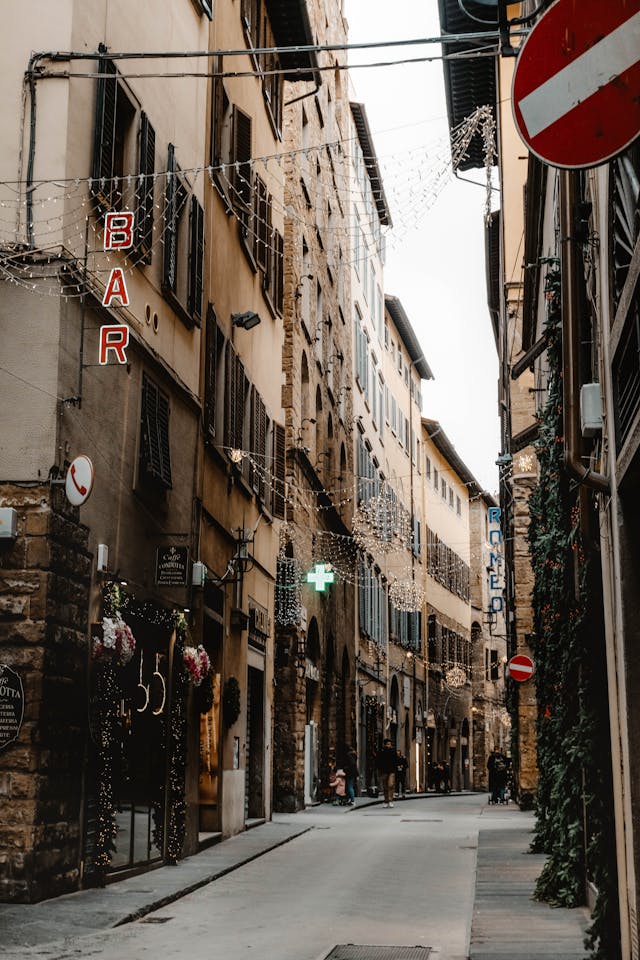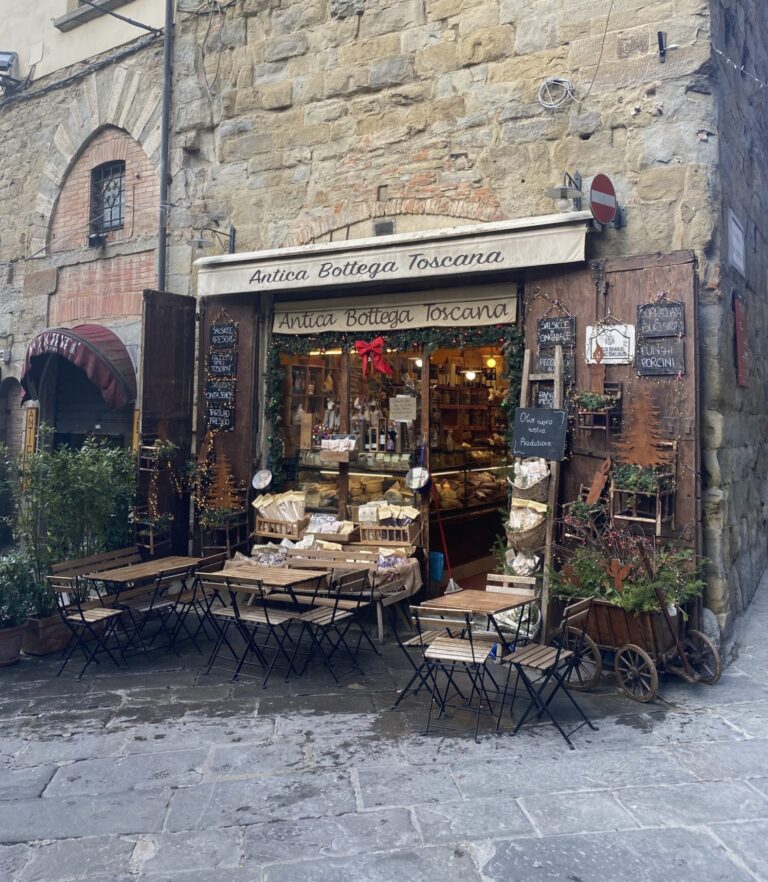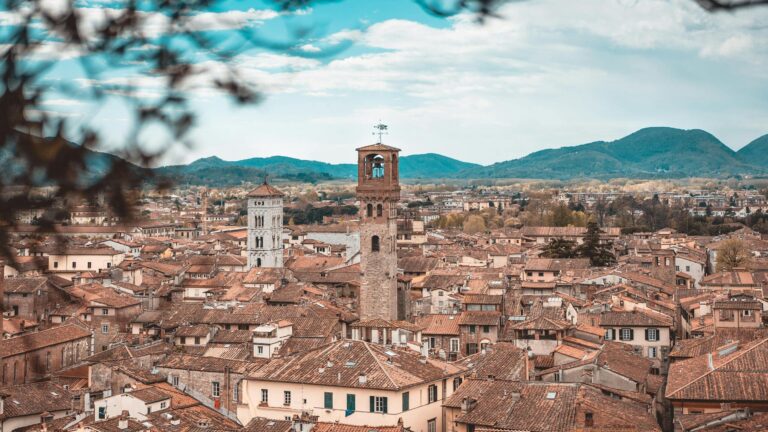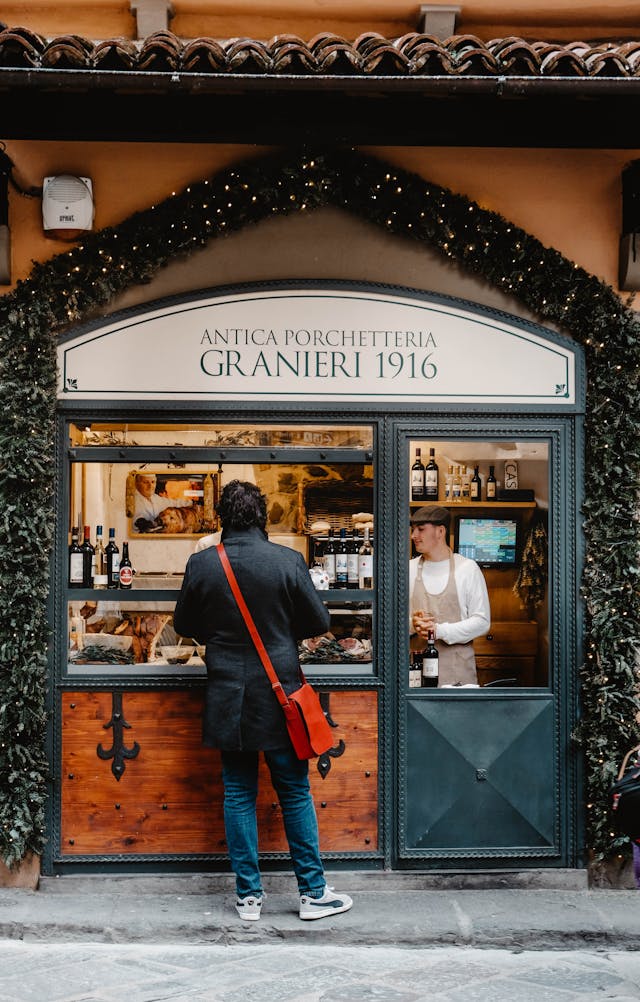The Perfect Tuscany Itinerary for 5, 7 Or 10 Days
Even after more than a decade of exploring the region, we still get a thrill from discovering Tuscany’s hilltop villages, exceptional eateries, and fantastic wineries. Now that we own our own little piece of Chianti, we have the freedom to be more spontaneous with our adventures—but even the perfect Tuscany itinerary requires some planning!
The key to an unforgettable holiday lies in a well thought-out itinerary. Using Florence as the central hub, we’ve designed three flexible itineraries to help you make the most of your time—whether you’re staying 5, 7, or 10 days or longer.
From iconic cities and landmarks to hidden gems, these itineraries and day trips from Florence, combine sightseeing, relaxation, and a taste of Tuscany’s rich history, culture, and cuisine.
With our Tuscany trip itinerary, you’ll be perfectly placed to explore the region’s highlights, from rolling wheat fields and vineyards to cypress-lined white roads that lead to charming country villas.

🔦 What’s In This Spotlight? jump ahead.
8 Steps To Planning Your Perfect Tuscany Itinerary
Planning ahead is the secret to fully enjoying Tuscany’s stunning landscapes and historic cities and towns. After a number of years of travelling, we use the following 8-steps to make the most of all of our trips to Italy.
How To Get To Florence
Florence is very well-connected to both Rome and Milan, making it the perfect starting point for exploring wider Tuscany adventure.
Here’s a breakdown of your best options for getting to Florence:
- By Rail: High-speed trains are the best way to reach Florence. Trains from Rome or Milan to Florence take about 1.5–3 hours and cost between €20–€70 depending on how early you book and the class of service. Trains are fast, reliable, and drop you directly at Santa Maria Novella, Florence’s central station, which is conveniently located in the city centre.
- By Bus: A more budget-friendly option, but slower and less frequent. Buses take approximately 4–5 hours from both Rome and Milan, with ticket prices ranging from €15–€30. Keep in mind that bus stations are often located farther from the city centre, which may add time, effort and money to your journey.
- By Car: Driving from Rome or Milan takes 3–4 hours, traffic depending. Car rentals start at €40–€80 daily, excluding fuel, tolls, and parking. Driving and parking in Florence is tricky and costly & parking near the city centre is scarce. There are pros and cons to having a car. Renting a car is certainly an advantage for exploring Tuscany’s countryside, but they can be more of a hinderance once you’ve reached Florence.
💡 TRAVEL TIP: If you are driving, avoid the stress of Florence’s city traffic and expensive parking by using the Villa Costanza Park & Ride. Located just off the A1 motorway, this secure car park costs just €7 per day and offers easy access to the city. From Villa Costanza, we hop on the T1 tram, which runs every 6–8 minutes. It drops us at Santa Maria Novella Station in about 20 minutes. It’s hassle-free, budget-friendly (€1,50 each way) and a perfect option for both day trips or longer stays.
- By Air: Flying into Florence’s Amerigo Vespucci Airport is an option, particularly if you’re starting in Milan, but flights are often more expensive than rail or bus. From the airport, it’s a 20-minute taxi ride (€25 to €30 + €3 airport surcharge) or a 20-minute tram ride (€1.70 each way) to the city centre.
Rail travel is definitely the fastest, most comfortable, and eco-friendly way to reach Florence. With frequent departures, affordable pricing (especially with advance booking), and a hassle-free arrival at the city centre, it’s hard to beat the convenience of travelling by train.
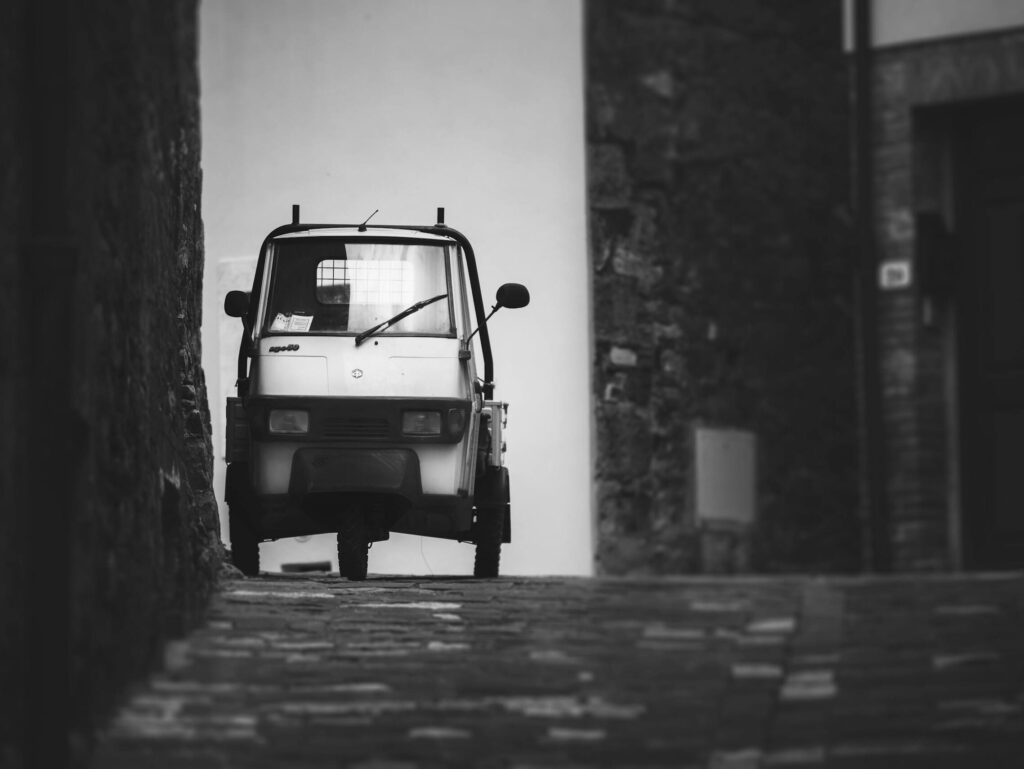
Destinations For 5, 7, or 10 Day Itineraries
We’ve identified 10 destinations with activities and suggestions to mix and match based on your taste. To give you even more flexibility, we’ve included a couple of ‘swap out’ destinations if you have extra time or want to change things up. This way, you can tailor your Tuscany itinerary to perfectly suit your interests and schedule.
Next, we’ve outlined our suggestions for 5, 7, and 10-day itineraries in Tuscany, each offering a balance of art and culture, scenic landscapes, and moments to relax. Whether you want to immerse yourself in Tuscany’s art and history, enjoy its renowned food and wine, or simply take in the stunning views, these itineraries are designed to help you craft a well-rounded Tuscan experience.
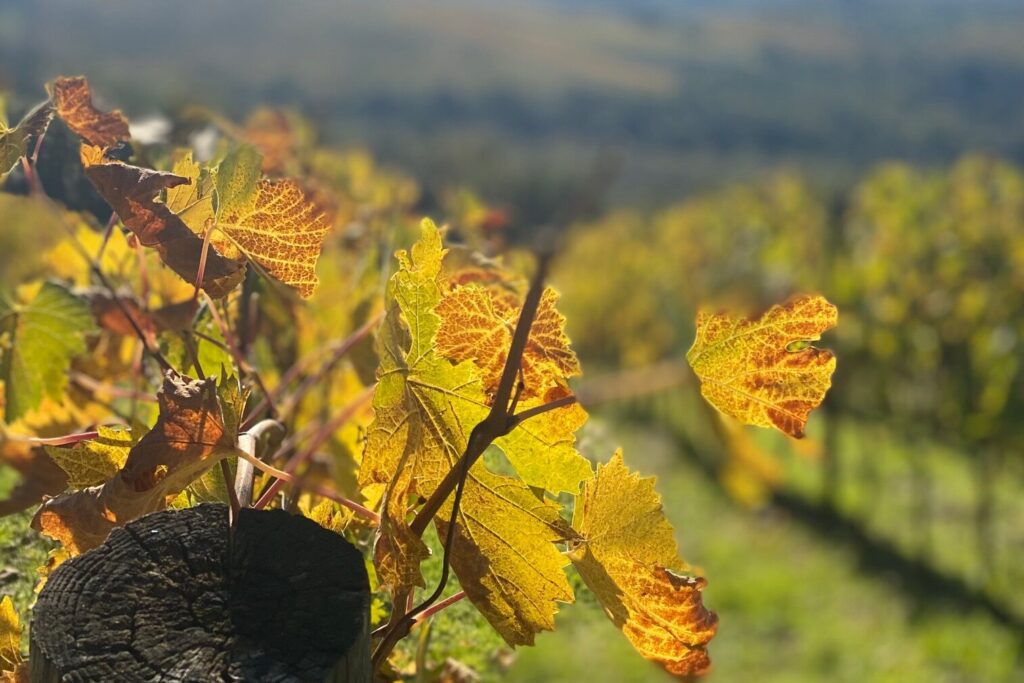
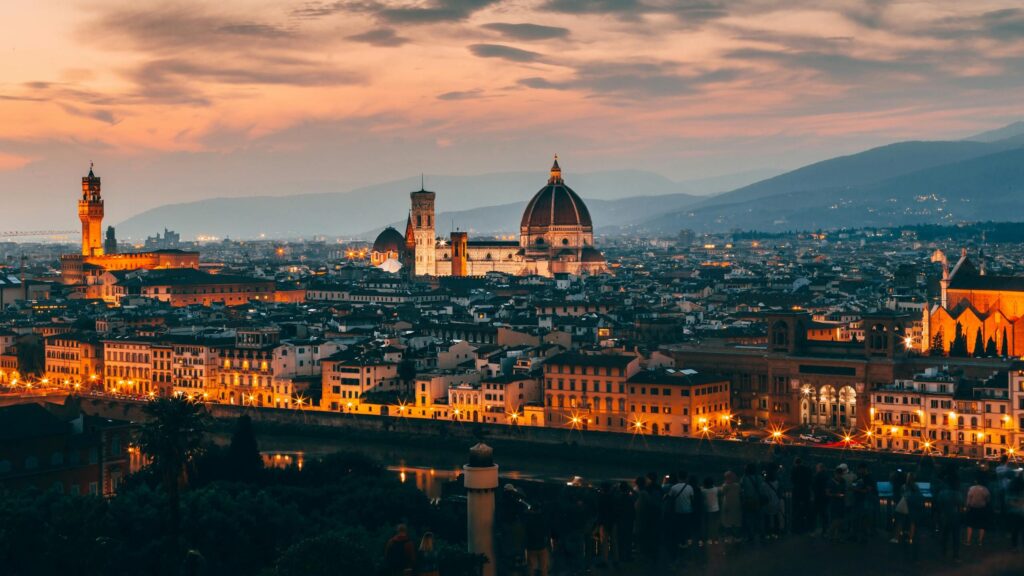
Two Optional Swap Out Days (Without A Car)
If you would like to mix things up or add additional days to your Tuscany itinerary, here are a couple of ideas for the best day trips from Florence, without the need for a car.
Take a short train ride to Pistoia, a hidden gem packed with history and charm, or head to Prato to soak up its artistic vibe and fascinating past.
Both spots are easy to reach by public transport and offer a perfect mix of culture, history, and stunning scenery!
Our 5 Day Tuscany Itinerary
Our 5-Day itinerary reflects how we like to enjoy Tuscany—a mix of iconic landmarks and the quiet charm of the countryside. It’s designed to offer a bit of both: the energy of city life and the relaxed pace of rural escapes.
Over these 5 days, you’ll discover Tuscany’s variety, from its art and history to its wine and landscapes. With each destination just a short distance away, you’ll spend less time travelling and more time enjoying what Tuscany has to offer.
Day 1: Florence: Florence is Tuscany’s cultural heart. Explore iconic landmarks like the Duomo, Uffizi Gallery, and Ponte Vecchio. Start your trip with the Renaissance charm this city embodies.
Day 2: Siena and/or San Gimignano: Siena’s Piazza del Campo and medieval streets offer a unique contrast to Florence. San Gimignano’s towers and artisanal shops add a picturesque countryside vibe.
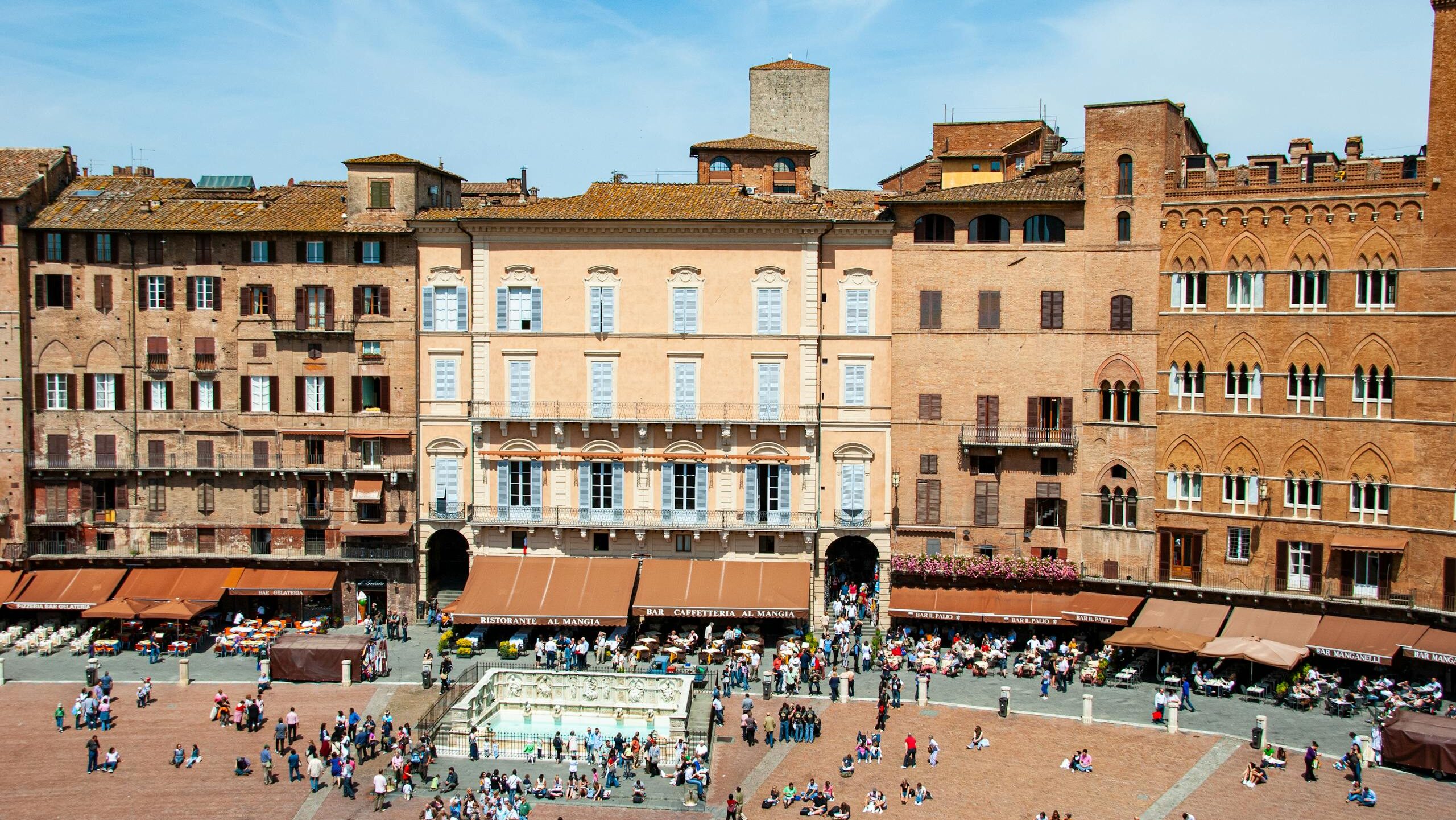
Day 3: Chianti Wine Country: Experience Tuscany’s quintessential rolling vineyards and indulge in wine tastings paired with local delicacies. Perfect for relaxation and immersion in rural beauty.
Day 4: Val d’Orcia (Pienza & Montepulciano): Known for its postcard-perfect landscapes, Val d’Orcia showcases Tuscany’s serene beauty. Pienza offers pecorino cheese and stunning views, while Montepulciano features excellent wines.
Day 5: Lucca and/or Pisa: Lucca’s well-preserved walls and charming streets provide a serene end to the trip, while Pisa’s iconic Leaning Tower is definitely worth seeing. Both cities are compact and easily explored in a day, as long as you make an early start from Florence.
Our 7-Day Tuscany Itinerary
With extra time in Florence and the Val d’Orcia, you’ll have plenty of opportunities to soak up even more of the region’s rich art, history, and wine culture.
This itinerary brings together everything we love about Tuscany—stunning landscapes, incredible food, and a sense of timeless charm. The thoughtfully planned route keeps things simple, so you spend less time backtracking and more time enjoying each destination at your own pace.
Day 1-2: Florence
- With extra time, explore Florence in more depth. Visit major landmarks like the Duomo, Uffizi, and Accademia Gallery, and enjoy a leisurely walk through Oltrarno for artisan workshops and authentic dining.
Day 3: Siena and San Gimignano
- Siena’s Gothic charm and San Gimignano’s medieval skyline showcase Tuscany’s rich history and architecture. Both are close enough to fit into a day while still feeling unrushed.
Day 4: Chianti Wine Region
- Dedicate a full day to wine tastings, vineyard tours, and soaking in the scenic countryside. Pair this with visits to quaint towns like Dedicate a full day to wine tastings, vineyard tours, and soaking in the scenic countryside. Pair this with visits to quaint towns like Panzano, Castellina or Radda in Chianti..
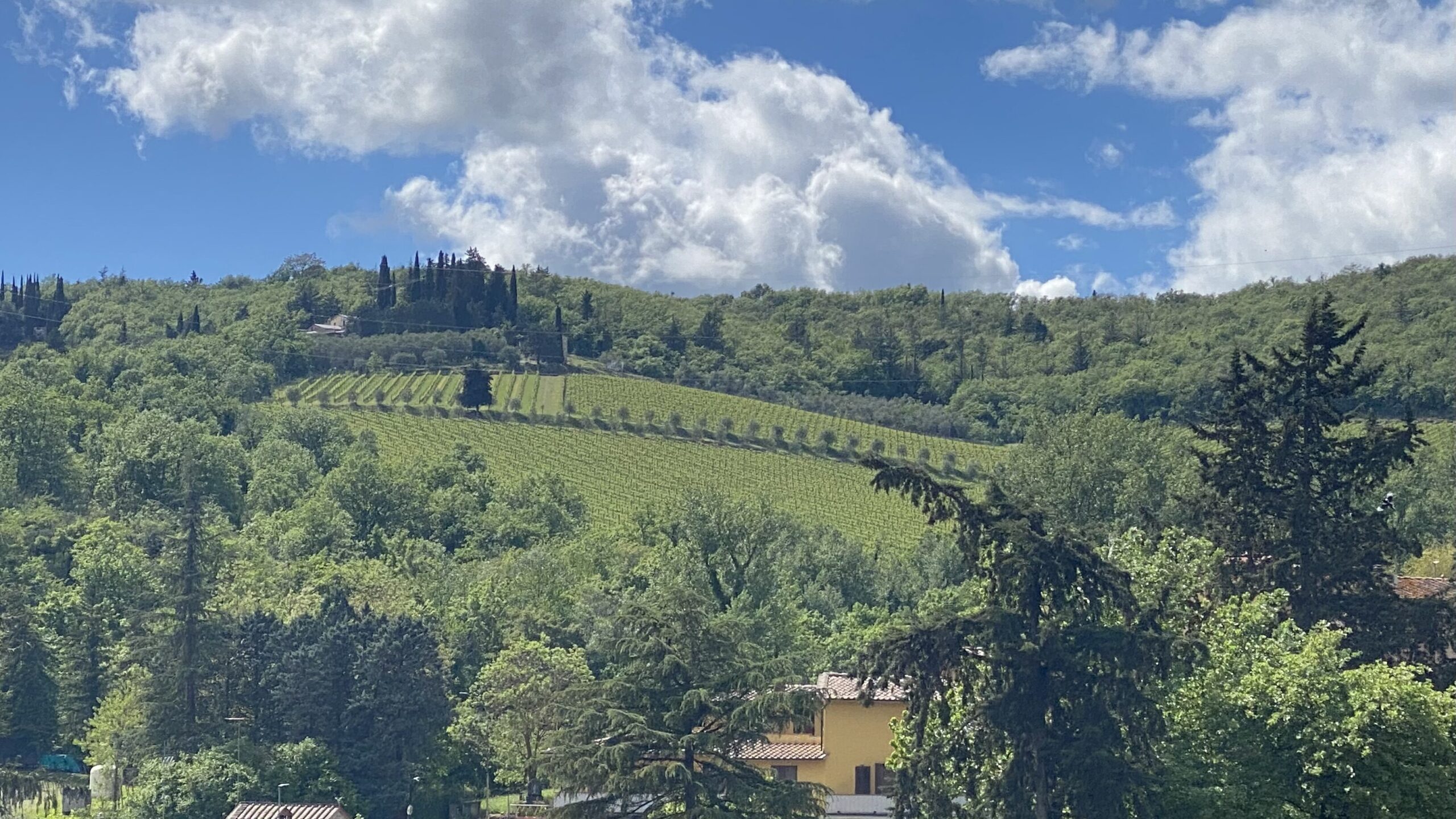
Day 5: Val d’Orcia (Pienza, Montepulciano & Montalcino)
- Val d’Orcia’s rolling hills, iconic cypress-lined roads, and culinary highlights make this a quintessential Tuscan experience. Pienza offers pecorino cheese, Montepulciano is famed for Vino Nobile, and Montalcino is home to Brunello.
Day 6: Lucca and Pisa
- Explore Lucca’s bike-friendly walls and charming streets in the morning, followed by Pisa’s Leaning Tower and Piazza dei Miracoli in the afternoon. Both are compact, so you can see highlights without feeling rushed.
Day 7: Cortona or Arezzo
- End the trip with a visit to a smaller, less-touristy town. Cortona offers hilltop views and an artistic vibe, while Arezzo is rich in art and antiques, giving you a taste of Tuscany’s quieter side.
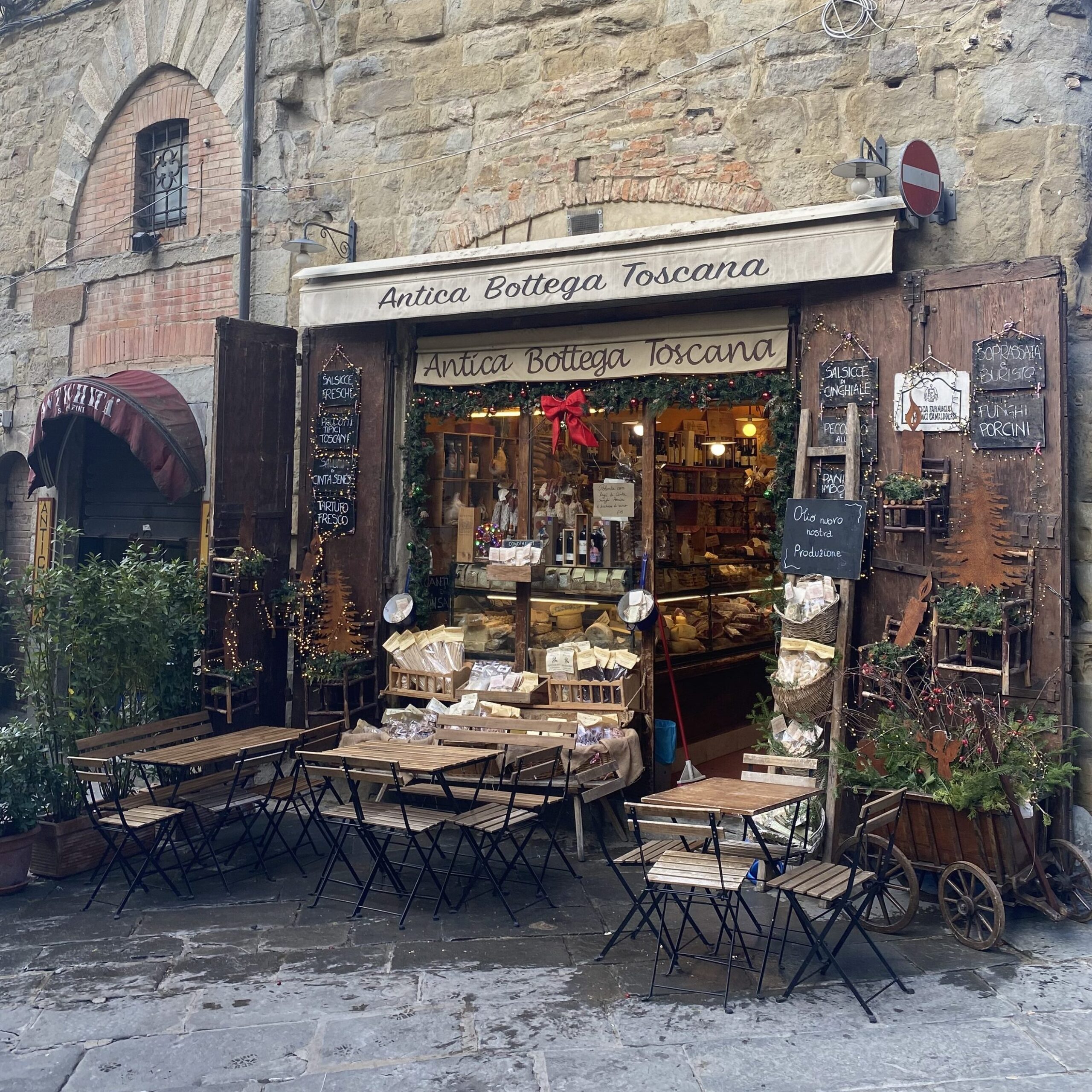
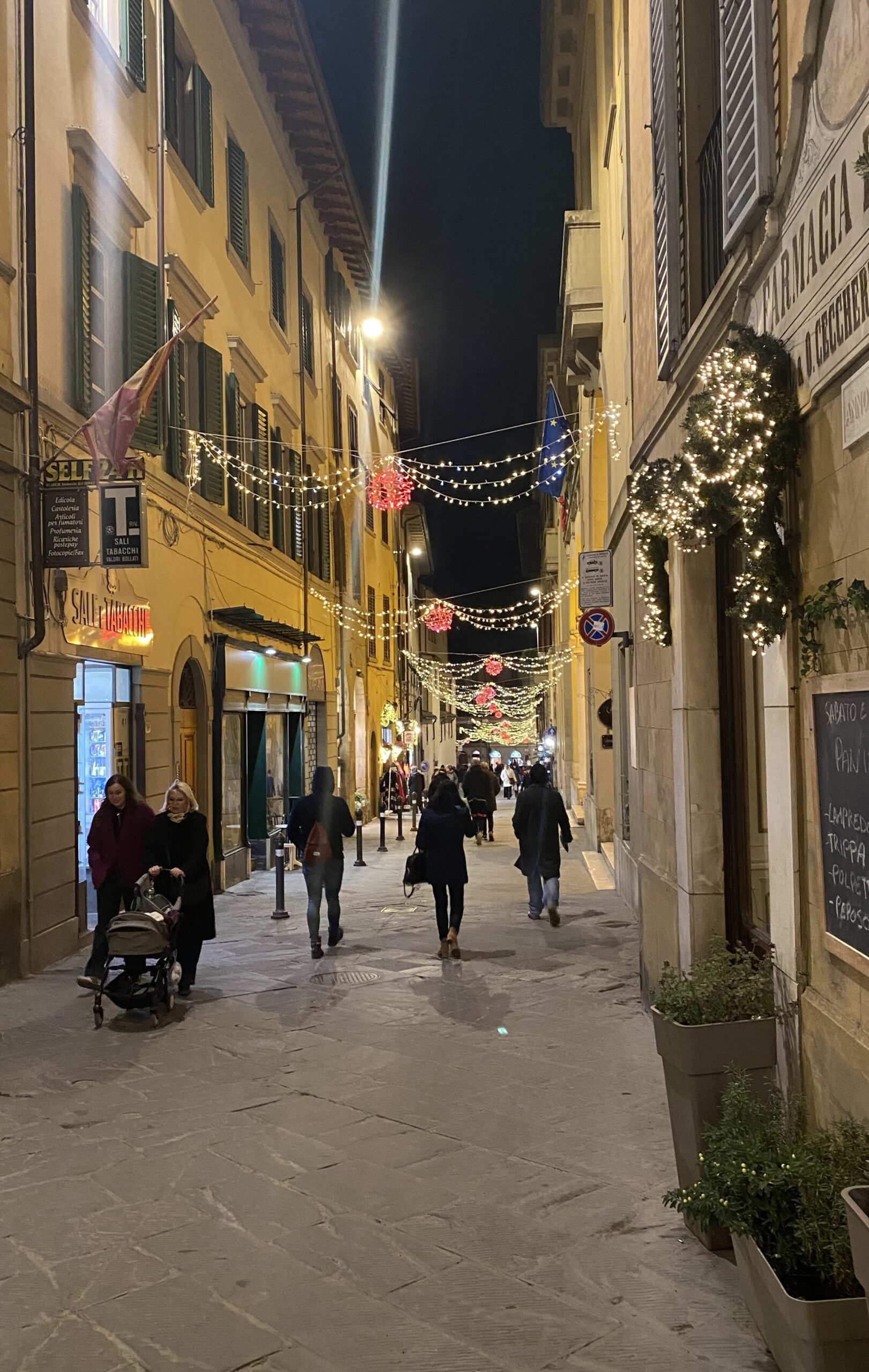
Our 10-Day Tuscany Itinerary
This well-paced 10-day itinerary lets you fully embrace the spirit of Tuscany without feeling rushed.
With two days in Florence and the Val d’Orcia, plus the flexibility to explore the Tuscan coast, it caters to a variety of interests. Ample time at each stop allows you to savour Tuscany’s highlights and immerse yourself in its unforgettable atmosphere.
Day 1-2: Florence
- With more time, explore Florence’s key sites and hidden gems. Visit the Duomo, Uffizi Gallery, and Boboli Gardens. Take a day to enjoy quieter neighbourhoods like Oltrarno or a sunset at Piazzale Michelangelo.
Day 3: Fiesole and Florence Hills
- Just outside Florence, Fiesole offers ancient Roman ruins, hilltop views, and a peaceful escape. It’s a relaxed way to enjoy Florence’s surrounding countryside.
Day 4: Siena and San Gimignano
- Siena’s Gothic architecture and San Gimignano’s medieval towers are must-see cultural icons, perfect for a day trip without feeling rushed.
Day 5: Chianti Wine Region
- Spend the day visiting wineries and indulging in wine tastings, surrounded by picturesque rolling hills. Combine this with visits to charming towns like Radda, Castellina or Gaiole in Chianti.
Day 6-7: Val d’Orcia (Pienza, Montepulciano & Montalcino)
- Dedicate two days to fully experience Val d’Orcia’s beauty. Explore Pienza’s streets and pecorino cheese shops, Montepulciano’s wine cellars, and Montalcino’s Brunello wines while enjoying leisurely drives through iconic landscapes.
Day 8: Lucca and Pisa
- Spend the morning cycling or walking Lucca’s walls, then visit Pisa for the Leaning Tower and Piazza dei Miracoli. With extra time, explore Pisa’s less touristy areas to get a view of the more authentic Tuscan life.
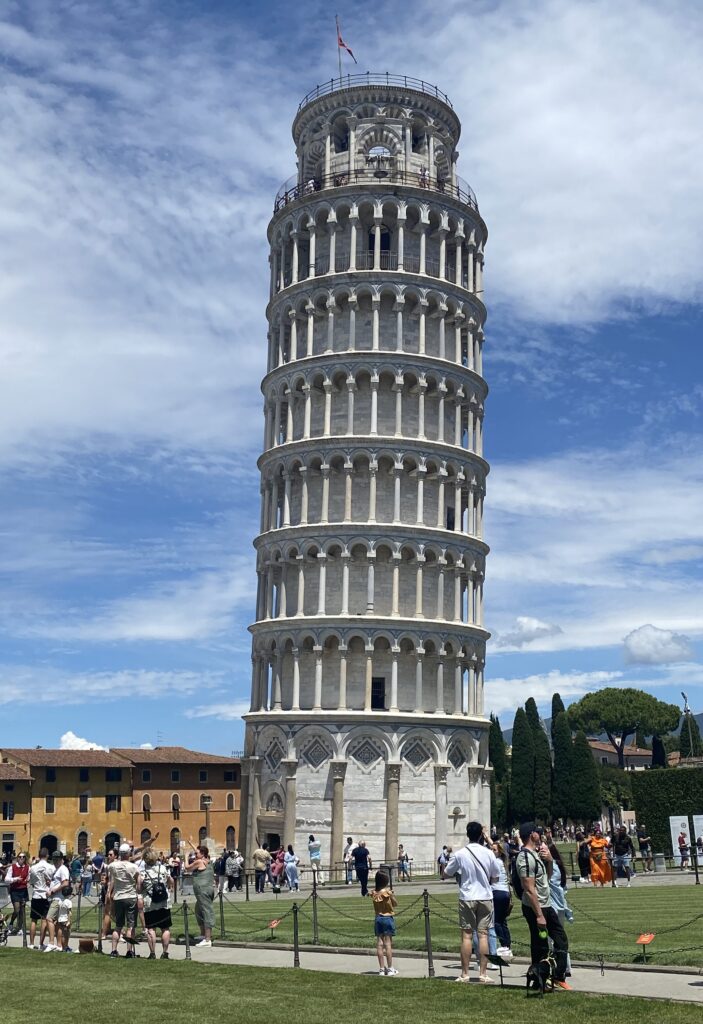
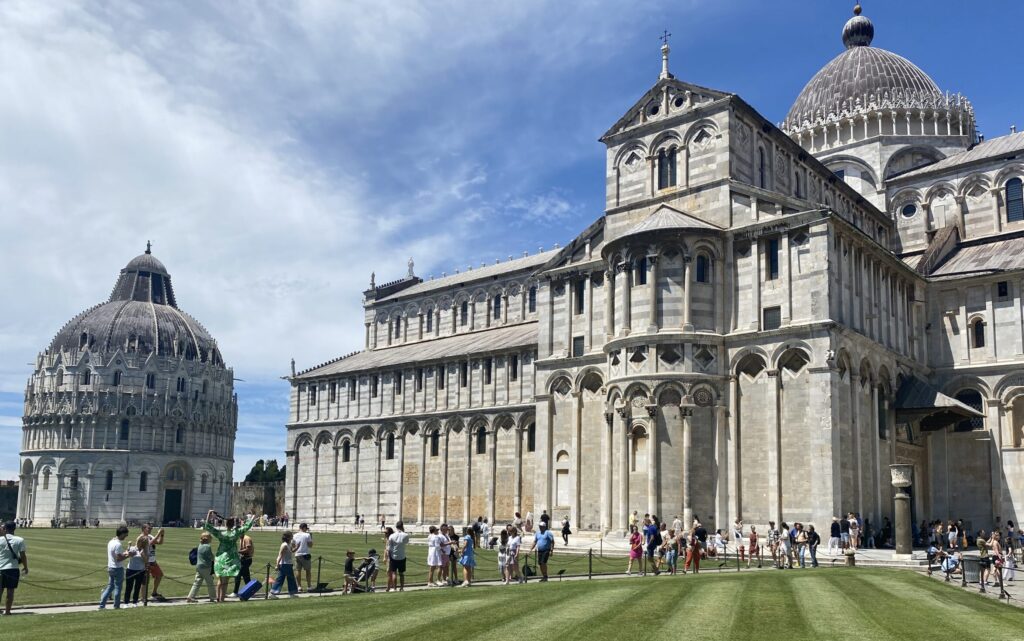
Day 9: Cortona or Arezzo
- Explore one of these charming towns for a quieter, more authentic Tuscan experience. Cortona offers breathtaking views and artistic flair, while Arezzo features stunning churches and a vibrant antique market (if timed right).
Day 10: Livorno
- For a unique finish, visit Livorno for fresh seafood and views along the Mediterranean.
Frequently Asked Questions
From the best times to visit, ideal trip lengths to transportation options and must-see destinations, we answer some of the most common questions to help you make the most of your Tuscan getaway.
Tips For A Stress-Free Trip To Tuscany
- Getting Around: Renting a car can be the most convenient way to explore Tuscany beyond Florence. However, if you prefer not to drive, consider booking a driver or a guided tour for your day trips to ensure hassle-free travel.
- Timing: Start your days early to make the most of each destination, especially during peak tourist seasons when popular spots can get crowded.
- Packing: Bring comfortable shoes for navigating cobblestone streets and pack layers to adapt to the changing weather, particularly in spring or autumn.
- Reservations: Book accommodation, popular restaurants, and key attractions in advance, especially during high season, to avoid disappointment.
- Local Insights: Learn a few basic Italian phrases—it’s a small effort that goes a long way in connecting with locals and enriching your experience.
- Pace Yourself: Tuscany is best enjoyed at a leisurely pace. Avoid cramming too many activities into one day so you can fully savour the region’s beauty and charm.
Whether you’re drawn to Florence’s Renaissance treasures, the beauty of the Val d’Orcia, or the sun-drenched Tuscan coast, this guide gives you the flexibility to mix and match stops to suit your travel style. These itineraries aren’t rigid schedules—they’re a foundation to help you craft your perfect Tuscan adventure.
Take your time wandering through medieval hill towns, sipping wine in a Chianti vineyard, or catching a golden sunset over the cypress-lined countryside. We’ve included plenty of options and suggestions to inspire your journey.
With the freedom to tailor your trip, you can create an experience that reflects your interests—whether it’s packed with exciting activities or designed for leisurely enjoyment.
So, what are you waiting for? Start planning your journey today and get ready to fall in love with Tuscany!

